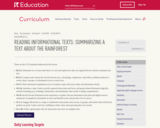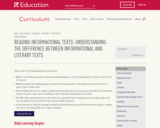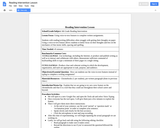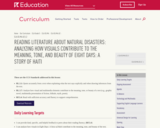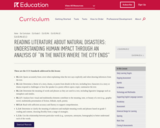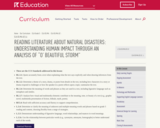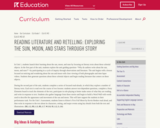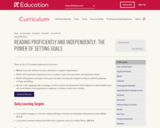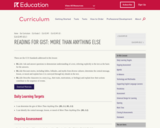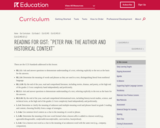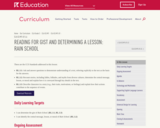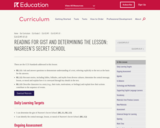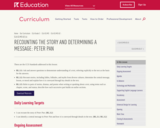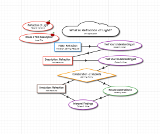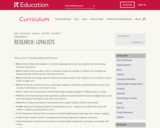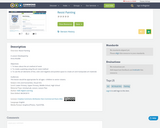In this lesson, students hear Waiting for the Biblioburro, a story about the struggles a girl named Ana faces with access to education in Colombia and the help she gets from the biblioburro, a librarian who travels around on donkeys with books. After listening to the story read aloud, students reflect on its message and create the Experiences with Overcoming Challenges anchor chart as a vehicle to share their reflections.
In Work Time A, students participate in the Say Something protocol to complete the Recounting the Story note-catcher (RL.3.2, RL.3.3). After completing this note-catcher, students consider the central message, lesson, or moral and explain how it is conveyed through key details in the text (RL.3.2). Note that this book is based on a real-life biblioburro in Colombia; the story isn't a fable, folktale, or myth from another culture, and so it doesn't fully address the requirement of the RL.3.2 standard. This part of the standard is addressed in more detail in 3M2 with folktales.
Throughout Unit 1, students revisit the module guiding question: "Why are education, reading, and books important?" In this lesson, they consider why reading is important to Ana and to themselves. Recall that students may have a range of feelings about the importance of reading based on their personal or cultural values and experience, so be sensitive to this.
This lesson is the first in a series of three that include built-out instruction for the use of Goal 1 Conversation Cues. Conversation Cues are questions teachers can ask students to promote productive and equitable conversation (adapted from Michaels, Sarah and O'Connor, Cathy. Talk Science Primer. Cambridge, MA: TERC, 2012. Based on Chapin, S., O'Connor, C., and Anderson, N. [2009]. Classroom Discussions: Using Math Talk to Help Students Learn, Grades K-6. Second Edition. Sausalito, CA: Math Solutions Publications). Goal 1 Conversation Cues encourage all students to talk and be understood. As the modules progress, Goal 2, 3, and 4 Conversation Cues are gradually introduced. Refer to the Tools page for the complete set of cues. Consider providing students with a thinking journal or scrap paper. Examples of the Goal 1 Conversation Cues you will see in the next two units are (with expected responses):
- After any question that requires thoughtful consideration:
Teacher: "I'll give you time to think and write or sketch."
Teacher: "I'll give you time to discuss this with a partner."
- To help students share, expand, and clarify thoughts:
Teacher: "Can you say more about that?"
Student: "Sure. I think that _____."
T: "Can you give an example?"
S: "OK. One example is _____."
T: "So, do you mean _____?"
S: "You've got it./No, sorry, that's not what I mean. I mean _____."
Note that Goal 1 Conversation Cues (and expected student responses) were built into the Discussion Norms anchor chart in Lesson 2. Conversation Cues and discussion norms are similar in that they seek to foster productive and collaborative conversation. Furthermore, Conversation Cues aim to ensure equitable conversation by gradually building student capacity to become productive, collaborative participants. Goal 1 Conversation Cues focus on the fundamentals of encouraging students to talk and be understood. Goals 2-4 take students to deeper levels of conversation, from listening to others to deepening their thinking to thinking with others.
Lessons 1-2 featured built-out instruction for Think-Pair-Share. Moving forward, this will no longer be built out within lessons. Continue to use Think-Pair-Share in this way to promote productive and equitable conversation. (Refer to the Classroom Protocols document for the full version of the protocol.)
In this unit, the habit of character focus is working to become ethical people. The characteristic they are reminded of in this lesson is: respect because of the sensitive nature of the text in relation to student experiences and family/cultural backgrounds.
The research reading that students complete for homework will help build both their vocabulary and knowledge pertaining to overcoming challenges in access to education, books, and reading near and far. By participating in this volume of reading over a span of time, students will develop a wide base of knowledge about the world and the words that help describe and make sense of it.
Recall that students are not given independent reading journals until Lesson 6. The homework reflects this by simply asking students to read their research text for at least 10 minutes. In the second half of the unit, they will begin responding to prompts in their independent reading journals.
